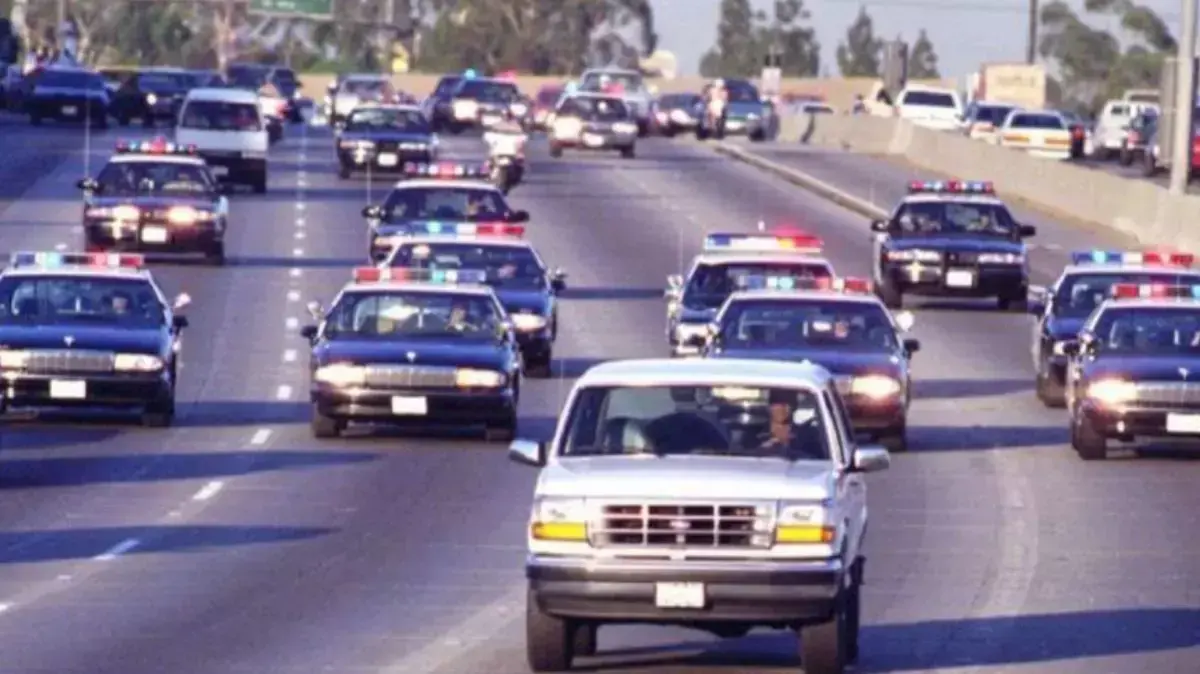On June 17, 1994 celebrity and NFL player OJ Simpson had failed turn himself in to the LAPD in connection with the killing of Nicole Brown Simpson and Ron Goldman.
He was spotted on the 5 Freeway in the back seat of his friend Al Cowlings’ Ford Bronco, sobbing and holding a .357 revolver to Cowlings’ head as he drove.
Simpson’s former football coach John McKay pleaded on the radio for Simpson to surrender. While watching the events unfold, Tom Lange realized he had Simpson’s cell phone number and managed to connect to him. Eventually Simpson was talked into surrendering.
The chase ended at 8:00 pm at his Brentwood estate, where 27 SWAT officers awaited. After remaining in the Bronco for about 45 minutes, Simpson exited and went inside for about an hour; a police spokesman stated that he spoke to his mother and drank a glass of orange juice.
Inside the Bronco, police found $8,000 in cash, a change of clothing, a loaded .357 Magnum, a United States passport, family pictures, and a disguise kit with a fake goatee and mustache.



From the BBC (2016):
I’d like to read the whole thing, because I would say the first two were more brought into the American consciousness by the L.A. riots. The other two- I can see domestic violence and I already mentioned the effects of money on the justice system.
In fact, I would say the fact that he was able to buy his way out of it says very little about the plight of the average black person in the justice system.